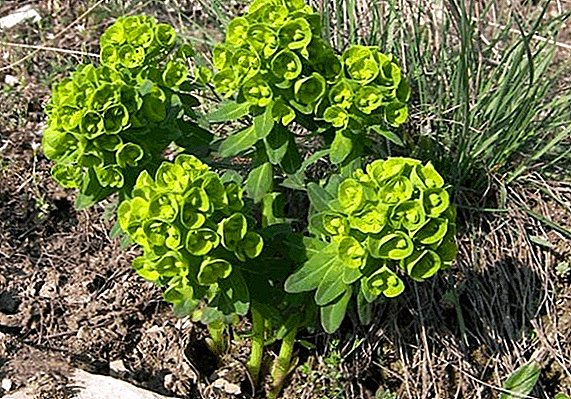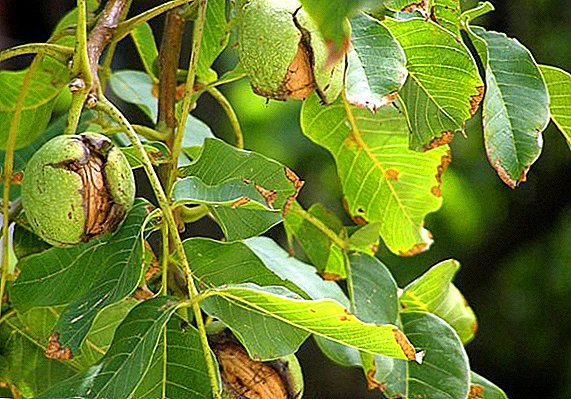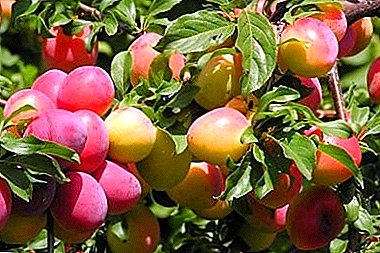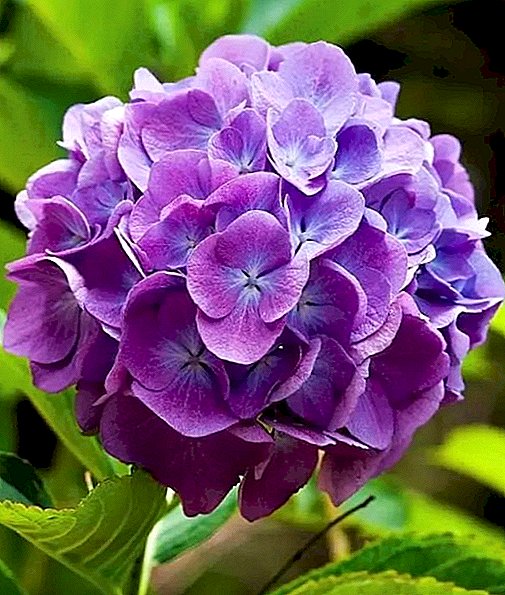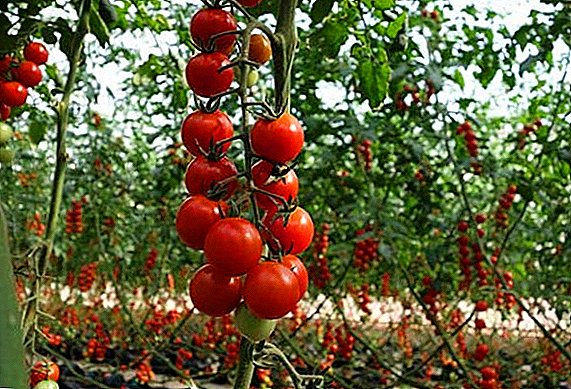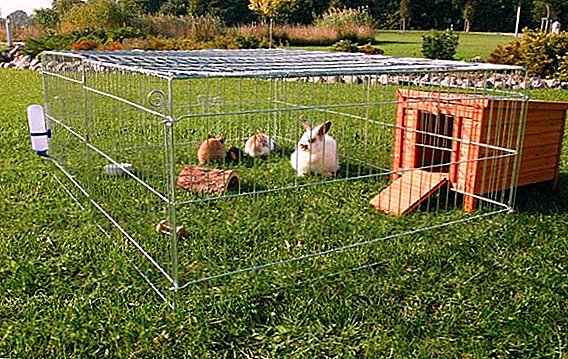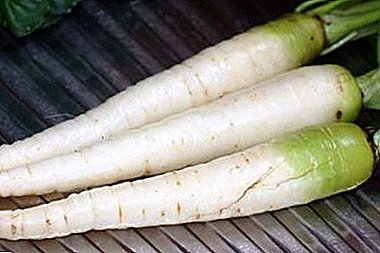
White carrots are not the most familiar vegetable on the Russian table, but there are a lot of its loyal connoisseurs.
And those who tasted this variety, will not refuse it. To understand what is special about it, except for an unusual color, and why it is so good, you need to take a closer look at its qualities and features.
In this article, you will learn about where white carrots grow, how to grow this type of carrot, and also find a lot of other useful information on vegetable care and application options.
What it is?
 The obvious fact is that it is the color of the roots themselves that gave the name of the white carrot. She owes them the absence of beta-carotene, the one that makes ordinary carrots orange. Externally, in addition to its color, white carrots are not much different from their relative. One of the differences - a strong pleasant aroma due to the high content of essential oils. White carrots are believed to be from Afghanistan, Iran and Pakistan.
The obvious fact is that it is the color of the roots themselves that gave the name of the white carrot. She owes them the absence of beta-carotene, the one that makes ordinary carrots orange. Externally, in addition to its color, white carrots are not much different from their relative. One of the differences - a strong pleasant aroma due to the high content of essential oils. White carrots are believed to be from Afghanistan, Iran and Pakistan.
- The plant is often confused with parsnips. They are really similar in appearance - white rhizome, both belong to the umbrella family. But on closer inspection it will be difficult to confuse them. The characteristic difference is that parsnips are bigger and darker than white carrots.
- Another erroneous comparison with turnips. Indeed, there are varieties of white turnip with an elongated and thin rhizome, but with white carrots they also have little in common.
Brief history of selection
The progenitress of all varieties of carrots is considered to be a wild white carrot, bitter to the taste, suitable only for animal feed. White, red and yellow carrots were cultivated in 14-15 centuries in Germany, France, England and the Netherlands. Even later - in the 17th century, Dutch breeders managed to bring out cultivated varieties of such carrots that were bitter, juicier and much more palatable.
What does it look like?
White carrots, like all its relatives, belong to the umbrella family. The plant is strong, almost does not differ from the classic orange varieties, it reaches a height of 50 cm. Greens are lush, slightly pinnate, similar to some varieties of parsley. The leaves are bright, elastic, grow up to 20-30 cm, resistant to the appearance of spots and other diseases. White carrot rhizome of elongated shape, smooth, elastic, juicy, grows 10-15 cm long.
What is different from other species?
 Externally, the varieties of white carrots, in addition to the color of the rhizome, are no different from their relatives, but it will be difficult to find a replacement for their qualities and properties. The main differences:
Externally, the varieties of white carrots, in addition to the color of the rhizome, are no different from their relatives, but it will be difficult to find a replacement for their qualities and properties. The main differences:
- white color (or with a tinge of ivory) of the rhizome;
- very juicy and sweet root vegetable;
- pronounced pleasant aroma (due to essential oils);
- delicate thin skin;
- lower calorie compared to orange varieties;
- suitable for allergies (those who can not eat colored vegetables).
Where is growing?
In nature, most often white carrots are found in the Mediterranean countries. When grown independently, it grows best in the temperate climate of the CIS countries. In Russia, in the open field it is better to grow in the southern regions. In greenhouses, white carrots can be grown everywhere.
- White carrots are best planted in light, loose, "breathing" soils, in neutral or slightly acidic soils.
- It is better to plant seeds to the place where they grew cucumbers, cabbage, tomatoes or onions. But after parsley or dill, it will grow very poorly, the soil after them needs to be processed.
Most popular varieties
What are the most common varieties of this root?
Among the varieties of white carrots are proven leaders for decades. Of these, three hybrids of "Lunar wite", "Waite satin" and "White Belgian" stand out.
Lunar wite
The variety was bred specifically for use in cooking. Differs juicy, sweet and delicate flavor. Root crops thin, with a thin and gentle skin, grow no more than 30 cm.
Early - to pick up the roots can be started just after 2 months. He has enough temperatures of +16, +20 degrees and good watering to give a bountiful harvest. At the same time, “Moonlight White” is demanding of conditions and care - it needs black soil, stable temperature, landing at precise intervals and regular abundant watering.
Under necessary conditions, the variety is well kept for a period of up to a year. Due to its ripening variety suitable for regions with a cold climate (Ural, Siberia), in the south for the season you can manage to get several harvests. The cost of one sachet of Lunar wite is on average 40 rubles per item.

Waite satin
The leader among the white varieties in taste. And in general one of the most popular varieties. Its roots are snow-white on the outside (the flesh is more creamy), smooth, juicy and crispy, elongated cylindrical shape with a sharp tail. The length of the fetus 25-30 cm, weight 100 grams.
The variety is early ripening, in order to ripen, it takes two months, the whole cycle from planting to maturation takes an average of one hundred days. Also demanding of the soil, regular irrigation, heat and light-loving, Buy a variety of Waite satin for an average price of 21 rubles per package.

White belgian
In European countries, it is also called “Blanche A Collet Vert”. The variety was bred from white fodder carrots, once popular in France in the 19th century. Root crops are spindly, large (up to 25 cm), the fruit itself is white, but the flesh is yellowish. The upper part ("shoulder") becomes greenish. “White Belgian” is an early maturity, shoots appear within 1.5 weeks, after 2.5-3 months it is fully ready for harvesting.
Soil variety is not demanding, like the previous ones, grows easily in open ground and does not need special fertilizer. Of the minuses - very unstable to low temperatures, for the emergence of shoots need a temperature of at least +10 degrees, but sudden frosts can kill all shoots.
The taste of “White Belgian” is significantly inferior, reveals the taste only after heat treatment - cooking or frying. The cost of the “Belgian White” hybrid reaches 180 rubles.

The chemical composition of root vegetables
In its chemical composition, white carrots differ little from their colored counterparts. The main difference is the absence of beta-carotene. If we talk about vitamins and minerals contained in white carrots, then they abound in it:
- vitamin C;
- a complex of vitamins of group “B” (thiamine, riboflavin, retinol, geranol, folic acid, and others);
- vitamins: E, K and H;
- minerals (potassium, calcium, sodium, magnesium, phosphorus, sulfur and chlorine);
- trace elements: (zinc, iron, copper, fluorine, iodine, manganese, selenium, boron, lithium, and others);
- bioflavonoids;
- essential oils;
- amino acids;
- coarse fiber;
- pectin.
It is also noted that white carrots contain less calories than orange.
Properties
Benefit
 Such a vegetable-saturated vegetable with regular use in its raw and processed form (even during heat treatment most of the vitamins in white carrots are preserved) has a very beneficial effect on the human body:
Such a vegetable-saturated vegetable with regular use in its raw and processed form (even during heat treatment most of the vitamins in white carrots are preserved) has a very beneficial effect on the human body:
- The fiber content improves the functioning of the intestines and normalizes digestion, useful for the prevention of cancer.
- Reduces the risk of strokes and helps in the prevention of atherosclerosis.
- Prevents disorders of the nervous system and brain (including Alzheimer's disease).
- Fills the lack of vitamins and minerals in the body.
- Suitable for the diet of allergies and baby food.
- It has a diuretic and choleretic effect.
- As a natural antioxidant rejuvenates the body.
- Fights against inflammatory processes, suppresses pathogenic bacteria.
- Effective in the fight against worms.
- Restores strength, relieves pain and fatigue.
- Strengthens the immune system.
- Normalizes the intestinal microflora, shown during recovery after treatment with antibiotics.
- Used as a mucolytic agent.
- Normalizes blood sugar levels, it is recommended for diabetes.
- The content of copper, zinc and nickel help purify the blood.
- Proven effect for the prevention of cancer.
Harm
White carrots are not capable of bringing harm, but it must also be eaten in reasonable quantities. Moreover, a large amount of vitamins in it can lead to hypervitaminosis. The truth is that for this you need to eat a huge amount. And the side effects are so rare that they are rather the exception to the rule. So what white carrots can harm:
- Still, it can cause allergies with too frequent use (due to carbohydrates and essential oils).
- May cause inflammation of the intestinal mucosa, constipation or diarrhea and exacerbation of gastrointestinal diseases.
- Dizziness, weakness and nausea, rapid heartbeat during overdose of vitamins B and white ascorbic acid contained in white carrots.
- To have an excessive diuretic effect.
- Exacerbation of thyroid diseases (with diseases of the endocrine system must be used with caution).
However, the symptoms described above are extremely rare and are the most annoying exception to the rule.
Step by Step Growing Instructions
Preparing for landing

- When planting white carrots, you will need a traditional inventory: a shovel and a hoe, both must be clean, without particles of fertilizer and other things.
- White carrots grow best in neutral and slightly acid soils, as well as in black soil and light loam. If you plan to plant white carrots in the winter, it is better to choose peat or sandy soil. In the autumn, you can make potash and phosphate fertilizers. Pre-dig the ground.
- Seeds before sowing need to be prepared - soak for about a day with water or fertilizer solution. To ensure that the seeds are distributed evenly, they are recommended to be mixed with sand (approximately 1 teaspoon of seeds per cup of sand). Germination time - after 18 - 20 days.
Process
Sow white carrots begin, usually in the middle of spring. Winter crops are planted since October. If the harvest is needed by the end of the summer for storage, it is better to sow in May-June. The beds are made in the form of grooves with a hoe, then the seeds are evenly distributed in them.
In the planting scheme, it is better to focus on the characteristics of a particular variety (indicated on the package). But it must always be borne in mind that the root will need a place to grow, and it must be provided.
- the distance between the rows should be at least 30 cm;
- after thinning, keep a distance of 5-15 cm;
- depth of sowing a little less than 5 cm in the summer and 5 cm in the winter.
Care
- The basic principle in the care of white carrots is to provide it with the necessary microclimate:
- soil temperature should be at least 8-10 degrees;
- it is necessary to cover the beds after sowing with a damp cloth to ensure moisture and access of air.
- After planting, white carrots do not require frequent watering, after the appearance of sprouts, it needs to be watered more often, but during growth and ripening, watering should be limited to 2 times a month. During the ripening of root crops it is better to reduce watering to a minimum.
- Feed carrots only three times during the growth. The first - after the appearance of the first shoots, then at intervals of one month. Top dressing is carried out only with mineral fertilizers, it is necessary to apply fertilizer only after watering.
- Loosening is a necessary step in caring for white carrots. She loves the air. It is better to loosen the soil immediately after germination. The next time after thinning - between the rows, with the growth already between the plants. Growing up root vegetables should be spud so that the green edging does not appear on the projecting part.
- To weed white carrots should be twice for the entire period of growth.
- Mulching should be carried out when the shoots reach a minimum of 15 cm. For this purpose, use fresh or dry grass, pine needles, compost, nettles, small leaves. You can also use covering material, burlap, or cardboard. Newspaper, straw and peat are not suitable for mulching.
Harvesting and storage of the crop

- Harvesting time will depend on the variety.
- A warm and dry day is chosen.
- If the carrot is poorly removed, you can use a spade or forks.
- Dug carrots are sorted, suitable for storage is treated with a weak solution of potassium permanganate and dried in the open air at a temperature of 15 degrees.
- It is better to store carrots in a dry basement at a temperature of 0 to +4 in boxes of sand, sawdust or onion peel.
Common mistakes
White carrots are grown relatively easily. But It is important to avoid blunders:
- Before the carrot sprouts, it is better not to water it, in order to avoid the formation of a crust on the soil surface.
- As soon as the third leaflets form, the carrots must be thinned. This is done again during the growth of the roots. There must be a distance of at least 5 cm between the roots.
- Spud carrots required.
Diseases, pests and their prevention
Varieties of white carrots as well as any other can be susceptible to diseases and pests. The fight against them goes the same way as for orange varieties:
- From black rot You can get rid of it, if you spray the sprouts with "Rovral".
- Cercosporosis can be defeated with the help of a bordeaux mixture solution.
- Mealy dew and bacteriosis disappear if the plant is treated with fungicides.
- Felt disappears after treatment with chlorine copper solution.
- Carrot flies, leaf beads, carrot moth will destroy VDG, Decis Profi and others. From folk remedies - a soap solution, ashy brew or decoction of tomato tops.
- From Bears will save a solution of vinegar, which is poured into the hole.
For the prevention of bedoubs carrots are treated in June. To do this, you can process ground parts infusion of nettle. Immunocytofit and other immunity products with bioactive agents that improve plant immunity will also help.
Options for use
- Raw - in the form of salads, juice, just whole.
- During heat treatment: boiled, fried, stewed.
- I make healing tea from tops.
- For medicinal purposes, use a decoction of the roots.
White carrots are not just exotic, which is gaining increasing popularity. This is a tasty, healthy and versatile vegetable, which, with proper care, is fairly easy to grow in our country on our own.


